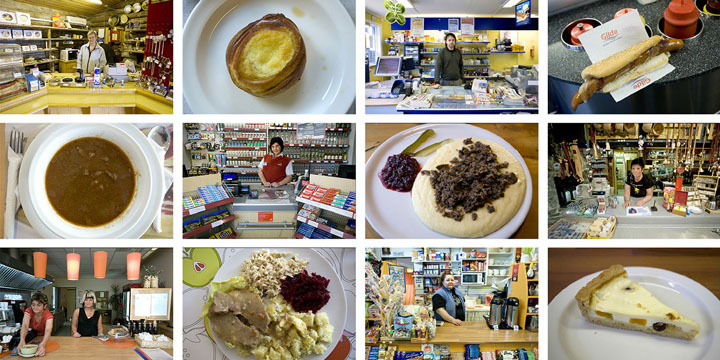A phenomenalist approach in the observation of spatial qualities of the E75 Barentsz Sea – Crete and E50 Brest – Makhachkala
Downloads
DOI:
https://doi.org/10.7480/rius.3.836Abstract
This paper takes the reader on a road trip, travelling the longest highway routes of the European continent and drawing conclusions based on a methodology of practical observation. The paper introduces a phenomenalist approach to highway design research, based on using photos and observations as a source of evidence in its own. The research is based on twelve weeks of driving, shooting photos, sleeping along the road, eating only in road-side restaurants and interviews with waitresses and shopkeepers. There used to be a lot of attention for the scenic experience and spatial quality of highways. In contemporary designs, however, highways are regarded more and more as sewage systems: something not to be seen, heard or smelled. Functional aspects such as noise reduction and traffic capacity prevail above spatial design. This paper shows how different countries are coping with these conflicting issues. It shows best practices and how these relate to the contemporary practice of highway design in the Netherlands.The paper argues that a technocratic and economically driven approach to highway design is a poor and vulnerable strategy. The paper further demonstrates that contemporary design policy in the Netherlands, with a strong focus on the aesthetics of built structures, neglects aspects that have much more impact on the spatial experience. The paper zooms in on five aspects that heavily affect the spatial experience of a highway: the sense of travelling on one continuous route, the sense of surveillance and state control, the sense of being part of a high quality public space, the existence of educating elements along the road and the level of technology. The paper draws conclusions based on methodologically collected observations and translates these into recommendations for designers.
How to Cite
Published
Issue
Section
License
Copyright (c) 2015 Michel Heesen

This work is licensed under a Creative Commons Attribution 4.0 International License.
References
Augé, M. (1992) Non-lieux: introduction à une anthropologie de la surmodernité. Seuil, La Librairie du XXe siècle
CBS, PBL, Wageningen UR (2007) Geluidsschermen en ZOAB in Nederland, 1975-2000. Den Haag, Planbureau voor de Leefomgeving
Cour des Comptes (2013) Les relations entre l’État et les sociétés concessionnaires d’autoroutes. www.ccomptes.fr
Fabrique (2005) Architectonische specificaties Regenboogroute. Delft, Rijkswaterstaat
Giedeon, S. (1941) Space, Time and Architecture. The Growth of a New Tradition. Cambridge, Harvard University Press
Habermas, J. (1962) Strukturwandel der Öffentlichkeit. Berlin, Luchterhand
Heesen, M. (2011a) Geheugen van het Snelweglandschap. Delft, Rijkswaterstaat
Heesen, M. (2011b) Routepluim 2011. Utrecht, Rijkswaterstaat
Heesen, M. & R. Top (2005) A4 Architectonische Specificaties. Amsterdam, Zwarts & Jansma Architecten
Nijenhuis, W. & W. van Winde (2007) De Diabolische Snelweg. Rotterdam, 010 Publishers
O.M.A. (2006) Machinekamer snelweg. Den Haag, Atelier Rijksbouwmeester
Peijs, K. (2006) IODS convenant 23 juni 2006, Den Haag, Ministerie van Verkeer en Waterstaat
Rogers, J. (2004) Adventure Capitalist. The Ultimate Road Trip. USA, Random House publishing
United Nations (1950) Declaration on the Construction of Main International Traffic Arteries. Geneva, United Nations treaty series
Patijn, W. et al. (2001) Ontwerpen aan Nederland. Architectuurbeleid 2001-2004. Den Haag, Sdu Uitgevers




